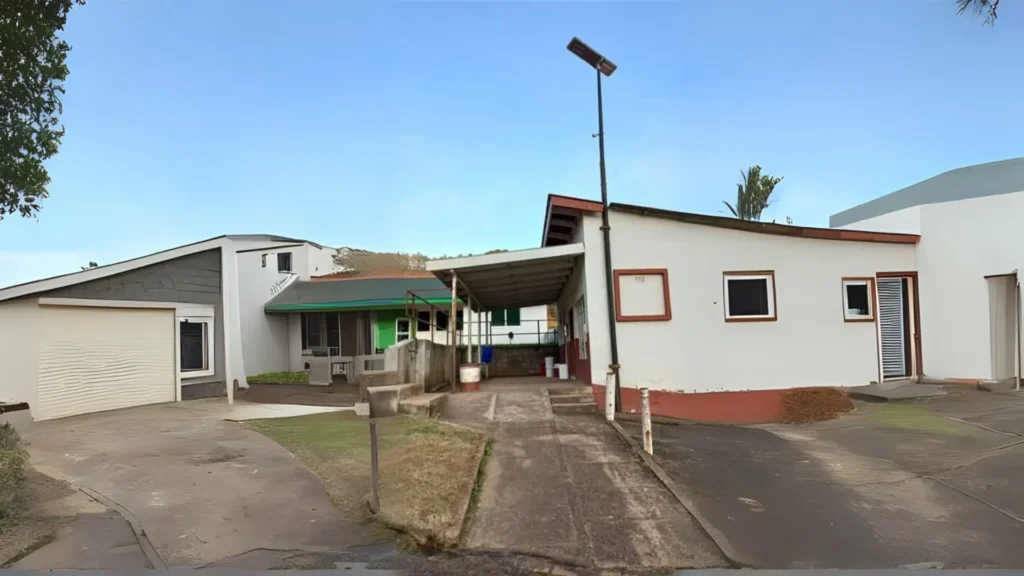Project Background and Requirement Analysis
Eswatini is a landlocked country in Southern Africa, currently undergoing critical infrastructure modernization and sustainable development. As a key component of this progress, the street lighting project aims to improve nighttime visibility and safety, particularly around residential areas and public facilities. Effective lighting not only enhances the safety of residents during evening activities but also significantly improves the overall quality of community life.
However, the project faced several major challenges:
Four Major Challenges
-
Inadequate Traditional Power Infrastructure
Many areas in Eswatini suffer from limited grid coverage, unstable power supply, and high connection costs. The traditional grid-dependent model is difficult to implement in remote regions, creating a significant bottleneck for development. -
Need for Energy Sustainability
As a developing country, Eswatini actively supports global climate initiatives. It seeks to reduce dependence on fossil fuels and promote renewable energy as part of its commitment to sustainable development goals. -
Ease of Installation and Maintenance
Given the country’s challenging terrain and limited human resources, the lighting solution must be simple to install and require minimal maintenance to ensure long-term operational stability. -
Operational Cost Pressures
The electricity and maintenance expenses associated with traditional streetlights place a heavy burden on local budgets. There is an urgent need for a cost-effective alternative to reduce overall operating costs.
Faced with these challenges, Eswatini authorities were searching for an economical, eco-friendly, reliable, and easy-to-deploy street lighting solution. The SRESKY ATLAS series of solar streetlights proved to be the ideal choice thanks to its advanced technical performance and high adaptability.
Technical Solution Design: Core Benefits of the SRESKY ATLAS Solar Streetlights
To meet the specific requirements of the Eswatini project, the project team selected the SRESKY ATLAS series solar streetlights. This series has demonstrated global reliability, winning over 3,500 tenders worldwide due to its cutting-edge technology and environmental adaptability.
Core Technology Highlights
-
All-in-One Design
The ATLAS series features a highly integrated structure combining high-efficiency solar panels, long-life LiFePO₄ batteries, high-lumen LED lights, and an intelligent control system. This design simplifies transportation and installation while significantly reducing project timelines and costs. -
High-Efficiency Solar Charging
Equipped with monocrystalline silicon solar panels, the ATLAS lights harness Eswatini’s abundant sunlight to efficiently convert solar energy into electricity, ensuring consistent power supply day and night. -
Intelligent Control System
-
ALS 2.0 Technology: This Adaptive Lighting System adjusts brightness based on battery level and ambient light conditions, ensuring up to 5+ days of lighting even during extended cloudy or rainy weather.
-
PIR Sensor: The Passive Infrared Sensor automatically adjusts brightness in response to pedestrian or vehicle movement, providing on-demand lighting and maximizing energy savings.
-
-
High-Performance Battery Management
The lights use Lithium Iron Phosphate batteries with TCS (Temperature Control System), which safeguards battery stability in high temperatures—a critical advantage in Eswatini‘s hot climate—while extending battery life. -
Exceptional Lighting Quality
-
High-Efficiency LED: With a luminous efficacy of up to 180lm/W, these LEDs deliver bright, uniform illumination to enhance road safety.
-
Optimal Color Temperature: 4000K with Ra>70 offers natural, comfortable lighting for pedestrians and drivers.
-
-
Rugged and Durable Construction
The housing is made from die-cast aluminum and tempered glass, offering IP65 waterproofing and IK10 impact resistance. This ensures durability against extreme weather and external damage for long-term reliability.
These technical strengths enabled the ATLAS lights to meet project requirements and provide an efficient, reliable lighting solution.
Project Implementation and Deployment
The project team executed a well-structured plan based on in-depth research and achieved efficient project delivery through the following stages:
Implementation Steps
-
Site Survey and Program Planning
Based on ATLAS series specs—e.g., 10m installation height and 40m pole spacing for model SSL-310A—the team determined the number, models, and optimal locations for the lights. -
Equipment Logistics and Preparation
The integrated packaging of the ATLAS lights simplified transportation. All units arrived safely at the project site in Eswatini, setting the stage for smooth installation. -
Streetlight Assembly and Installation
The team (wearing red uniforms and helmets) mounted the ATLAS lights on poles, lifted them as complete units, aligned them with foundation cages, and secured them with bolts—demonstrating the efficiency and user-friendliness of SRESKY products. -
System Testing and Commissioning
Each light was individually tested to verify lighting control, battery functions, PIR sensing, and multiple lighting modes (e.g., M1, M2, M3), ensuring all systems met the design requirements. -
Training and Project Handover
Local maintenance staff were trained on operations, daily inspections, and basic troubleshooting to ensure sustainable, long-term project success post-handover.
After installation, an ATLAS streetlight stands to the right of a white building’s entrance—blending seamlessly with the surroundings and ready for night operation.
Project Outcomes and Impact: Multidimensional Benefits
The successful implementation of the Eswatini solar street lighting project has led to several significant results:
-
Improved Road Safety
Bright and uniform lighting enhances night visibility, reduces accident risks, and improves safety for both pedestrians and vehicles. -
Outstanding Economic Benefits
Solar power eliminates electricity bills and significantly reduces operating expenses, offering major savings for local governments. -
Significant Environmental Impact
The project uses clean, renewable solar energy to achieve zero carbon emissions—advancing Eswatini’s climate goals. -
Greater Energy Independence
Off-grid operation of ATLAS lights ensures reliable lighting even in remote areas, reducing reliance on national grid infrastructure. -
Enhanced Community Quality of Life
Well-lit environments increase residents’ sense of safety and comfort, encouraging outdoor and community activities. -
Technology Benchmark
The project sets a precedent for renewable energy application in Eswatini, offering valuable insights for future green initiatives.
Conclusion and Outlook: A Bright Future for Solar Lighting
The Eswatini Solar Road Lighting Project is a powerful testament to the superior performance of the SRESKY ATLAS series in Africa’s diverse environments. With its cost-effective, eco-friendly, and reliable design, the project not only enhances road safety and community well-being but also serves as a model for Eswatini‘s sustainable future.

